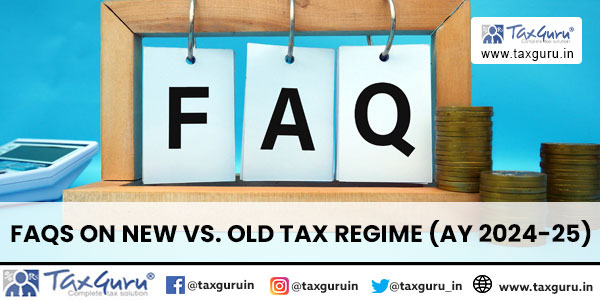Case Law Details
INCOME TAX APPELLATE TRIBUNAL
ITA No. 5890/Del/2010
Assessment Year: 2006- 07
M/s IHG IT Services (India) Vs. Income Tax Officer
ORDER
PER BENCH:
This Special Bench was originally constituted under Section 255(3) of the Income-tax Act, 1961 by the Honorable President, Income Tax Appellate Tribunal, vide order dated 16th March, 2012, consisting of Shri G.E.Veerabhadrappa, President, Shri G.D.Agrawal, Vice President and Shri Rajpal Yadav, Judicial Member, inter alia, to consider and decide the following question:-
“Whether prior to insertion of second proviso to Section 92C(2), the benefit of 5% tolerance margin as prescribed under proviso to Section 92C(2) of the ITAct, 1961 for the purposes of determining the arm’s length price of an international transaction is allowable as a standard deduction in all cases, or is allowable only if the difference is less than 5%.”
5. We have carefully considered the arguments of both the sides and perused the material placed before us. Before we proceed to consider the arguments of the parties, it would be appropriate if we narrate the history of Section 92C(2) of the Income-tax Act, 1961. Section 92C(2), before the amendment by Finance (No.2) Act, 2009, reads as under:-
“(2) The most appropriate method referred to in subsection (1) shall be applied, for determination of arm’s length price, in the manner as may be prescribed:
[Provided that where more than one price is determined by the most appropriate method, the arm’s length price shall be taken to be the arithmetical mean of such prices, or, at the option of the assessee, a price which may vary from the arithmetical mean by an amount not exceeding five per cent of such arithmetical mean.j”
6. Finance (No.2) Act, 2009 with effect from 1.10.2009 substituted proviso to Section 92C(2) with two provisos. The position of Section 92C(2) after the amendment by Finance (No. 2) Act, 2009 with effect from 1.10.2009 is as under:-“(2) The most appropriate method referred to in subsection (1) shall be applied for determination of arm’s length price, in the manner as may be prescribed:[Provided that where more than one price is determined by the most appropriate method, the arm’s length price shall be taken to be the arithmetical mean of such prices:
Provided further that if the variation between the arm’s length price so determined and price at which the international transaction has actually been undertaken does not exceed five per cent of the latter, the price at which the international transaction has actually been undertaken shall be deemed to be the arm’s length price.].”
7. That Finance Act, 2012 with retrospective effect from 1.4.2002 has modified the second proviso to Section 92C. The position of Section 92C(2) after the Finance Act, 2012 reads as under:-“(2) The most appropriate method referred to in subsection (1) shall be applied, for determination of arm’s length price, in the manner as may be prescribed:
[Provided that where more than one price is determined by the most appropriate method, the arm’s length price shall be taken to be the arithmetical mean of such prices:
Provided further that if the variation between the arm’s length price so determined and price at which the international transaction [or specified domestic transaction] has actually been undertaken [does not exceed [such percentage of the latter, as may be notified] by the Central Government in the Official Gazette in this behalf], the price at which the international transaction [or specified domestic transaction] has actually been undertaken shall be deemed to be the arm’s length price.]
[Explanation. = For the removal of doubts, it is hereby clarified that the provisions of the second proviso shall also be applicable to all assessment or reassessment proceedings pending before an Assessing Officer as on the 1st day of October, 2009.j”
8. From the above, it is evident that before the amendment by the Finance (No.2) Act, 2009 with effect from 1.10.2009, there was no dispute that the assessee had an option to claim the benefit of 5% tolerance margin while determining the arm’s length price. However, after the amendment by the Finance (No.2) Act, 2009 with effect from 1.10.2009, such benefit of 5% tolerance margin was restricted to the cases where variation between the arm’s length price and the price at which the international transaction has actually taken place does not exceed 5%. After the above amendment, there were contrary decisions of the ITAT on the issue of allow ability of benefit of 5% tolerance margin while determining the arm’s length price in the assessment years prior to 1.10.2009. In view of the apparent contrary decisions on the subject, the present Special Bench was constituted by the Honorable President to resolve the controversy. However, in the meanwhile, second proviso to Section 92C has been modified by the Finance Act, 2012 with retrospective effect from 1.4.2002, which is extracted above in paragraph No.7.
11. From the above, it is evident that the ITAT Pune Bench has followed the decision of ITAT Pune Bench and Delhi Bench which were rendered prior to amendment of second proviso to Section 92C(2) by the Finance Act, 2012 with retrospective effect. Though the decision of ITAT Pune Bench is after coming into force of the Finance Act, 2012, but, the amendment by the Finance Act, 2012 which has retrospective effect has not been considered by the ITAT Pune Bench. Therefore, in our opinion, the decision of ITAT Pune Bench is per incuriam and cannot be said to be good law after the retrospective amendment to the second proviso to Section 92C(2) by the Finance Act, 2012.
12. The learned counsel for the assessee has challenged the constitutional validity of retrospective amendment to second proviso to Section 92C(2). However, Income Tax Appellate Tribunal is a creation of the Income-tax Act and not a constitutional authority. It has to interpret the provisions of the Income-tax Act as it stands. It cannot adjudicate upon constitutional validity or otherwise of any provision of the Income-tax Act. We, therefore, reject the assessee’s argument that retrospective amendment to the second proviso to Section 92C(2) by the Finance Act, 2012 is constitutionally invalid.
13. Coming back to the provisions of the Income-tax Act, we are of the opinion that after the retrospective amendment to the second proviso to Section 92C(2) by the Finance Act, 2012, there remains no ambiguity that the benefit of tolerance margin is available only when the variation between the arm’s length price as determined under Section 92C(1) and the price at which the international transaction has actually been undertaken does not exceed the tolerance margin. Once it exceeds the tolerance margin, no benefit under the proviso would be available to the assessee and the ALP as determined under Section 92C(1) shall be considered. The question referred to the Special Bench is answered accordingly, i.e., in favour of the Revenue and against the assessee.
14. The matter will now go back to the Division Bench for passing orders in accordance with our above findings.
Decision pronounced in the open Court on 30th April, 2013.
























